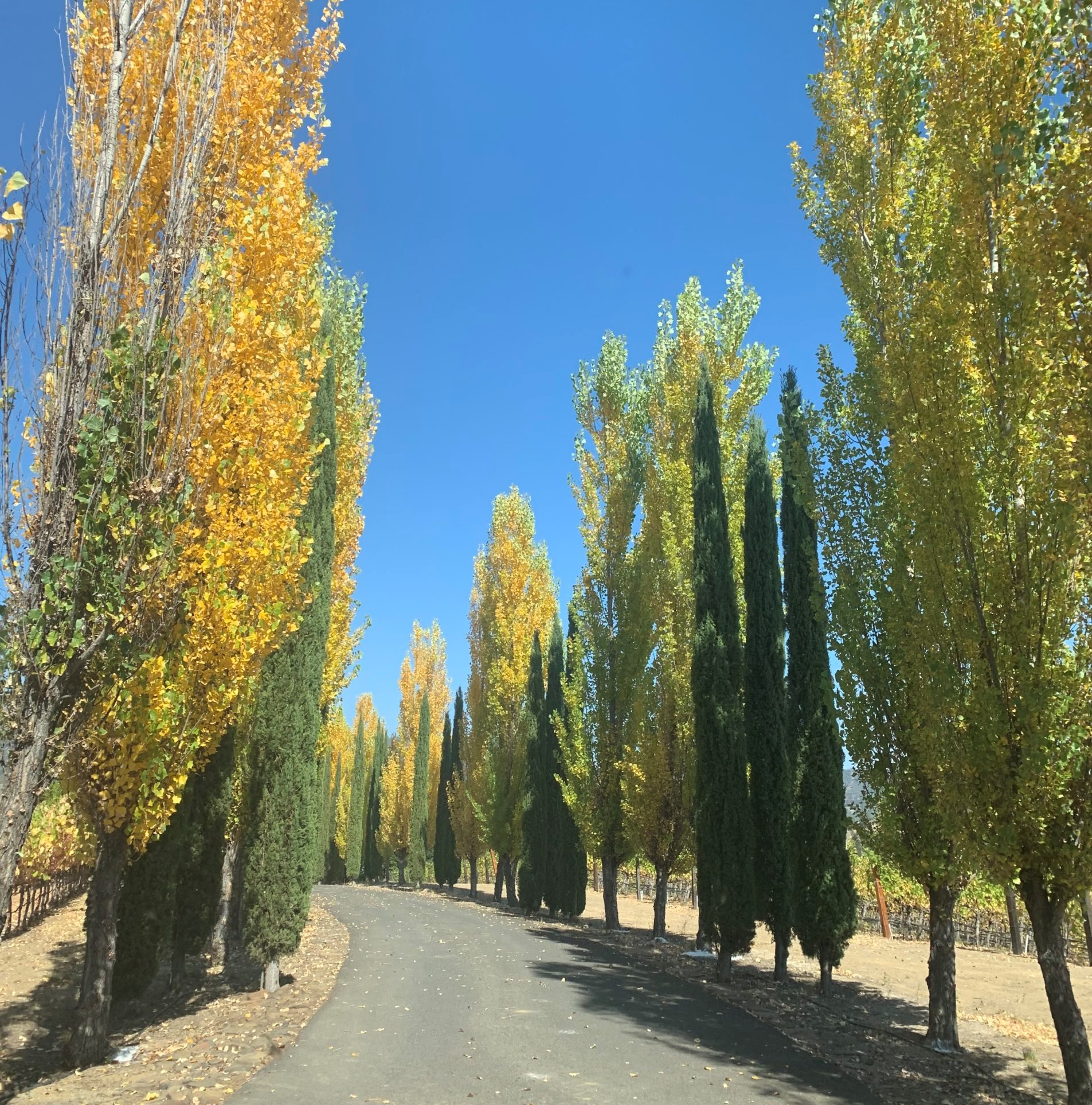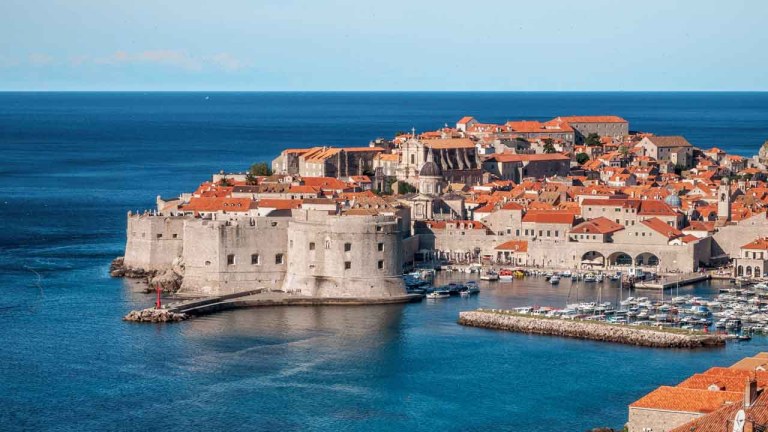Grateful for Great Wine at Gratus

We lived in Napa for nearly five years and did our best to visit wineries across all of the far-flung American Viticultural Areas (AVAs) that make up the larger Napa Valley AVA. Of course, we tasted on the valley floor at many wineries on Highway 29 . . . along Silverado Trail . . . on the mountaintops (Howell, Spring, Diamond, Veeder. But somehow, there is one location that we had not visited: Pope Valley. Sure, we were aware of its existence, nestled on the other sound of Howell Mountain on the way to Lake Berryessa. And we had had several wines made from fruit grown in Pope Valley. But it wasn’t until a fortuitous introduction to Thomas Wargovich, the vintner at Gratus Vineyards in Pope Valley, that we had occasion to make our way there.
In fairness, there are some valid reasons why we’ve not visited any tasting rooms there. First of all, Pope Valley is somewhat remote and not really on the way to or from anywhere else that we typically visit. Second, and more important, there really are not too many tasting rooms there open for visitation. This might be the reason that Pope Valley is not at AVA yet, but we expect this status will come at some point as vineyards there produce most of the grapes that go into Napa Valley-designation wines.
So we set out one Saturday right before our Europe trip to visit Thomas at Gratus Vineyards and taste the wines that we had been hearing quite a bit about from wine bloggers over the previous several months. Seemingly, Gratus wines had become a bit of a cult hit with wine geeks of late (and for good reason we would soon learn). The drive from our home in Mare Island to Pope Valley was about an hour as we took the back way through Green Valley and Suisun wine country, eventually crossing into Napa and taking the beautiful winding roads to Thomas’ property. We knew we were in for a visual treat as we entered the Gratus Vineyards’ gate and made our way up the stunningly picturesque driveway winding its way up to Thomas’ home.

Now this is a nice driveway!
Once we got to the top of the hill and parked we could see that a great deal of landscaping and planting had been done over the years, which Thomas confirmed for us when he gave us the tour of his property. Since purchasing the estate in 2001, Thomas has planted over 300 different types of trees and other plants; on the Fall day we were there, the explosion of color was eye-popping.
After our tour, Thomas took us down to a quaint tasting room on the property where we settled in to get a taste of some of the wines we had been hearing so much about, and to learn more about Thomas and the Gratus Vineyards story. I have to say, the wines really are special and I understand what all the fuss is about: Gratus makes elegant, balanced, creative wines that capture the essence of the terroir but also have an Old World sensibility that I always appreciate.
We kicked off the tasting with the one white wine that Gratus produces – their 2018 Rhone White Blend ($29). Most of the wine tastings we attend in Napa Valley seem to kick off with one of two white wines – Chardonnay or Sauvignon Blanc. While I enjoy both varietals when done well, I am getting bored with them lately, especially the trend of making 100% stainless steel versions that produce wines with little to no body or mouthfeel. By contrast, the Gratus Rhone White Blend was a lively, interesting, luscious white wine, a blend of Grenache Blanc (50%) and 15% each of Marsanne, Rousanne and Viognier, and 5% Picpoul Blanc. This wine was aged in neutral oak for seven months which contributed beautiful color and texture and flavor. The wine balances fruit and acidity nicely and is excellent quality for the price.
We next tried a rose wine, a 2016 on Gratus’ new label L’ovey. Thankfully, this was not another rose of Pinot Noir but instead an intriguing blend of Cabernet Sauvignon and Merlot made in the saignee method. This wine has a vibrant salmon color, intense floral and strawberry notes on the nose, and on the palate more strawberry. While this is a dry wine with nice acidity, there is some sweetness on the palate and lots of body. Nicely priced at $23.
While we definitely enjoyed the white and rose, the “wow” moments of our tasting came when Thomas transitioned us to the Gratus red wines. Our first red wine tasted was the 2016 Gratus Malbec, a deep and dense purple color filling my glass.

Even better than I was expecting
I have had Malbec wines from France and Argentina and this 2016 Gratus Malbec resembled neither – or perhaps, more accurately, it had the best attributes of each resulting in perhaps the best Malbec I have had yet. There was lovely black fruit on the palate without being excessively fruit forward; there was nice acidity and integrated tannins that make this a wine perfect for food but easily consumed without. At $55 a bottle we think this is a steal for such a high-quality Napa Valley red wine and it makes us wonder why more vintners aren’t planting this varietal in the valley.
Our next red wine was the 2016 Gratus Red Blend – 80% Cabernet Sauvignon, 15% Malbec and 5% Petite Sirah. This is a big, bold, tannic powerhouse of a wine that begs to be consumed with a slab of meat. Intense and bold aromas and flavors, a beautiful and long finish. At $80 a bottle, it is still a bargain compared to 3-digit Cabernet-driven wines from other Napa wineries; a very nice wine.
We moved on to a single-varietal Cabernet, the 2016 Gratus Reserve Cabernet Sauvignon, another big, bold wine. In some ways I would consider this a classic “Napa Cab” – beautiful fruit, powerful aromas, nice tannin, silky texture. However, there is more to this wine than just the fruit: the wine is elegant, structured, and, like the rest of the Gratus wines, there is a strong backbone of acid that balances the fruit. This wine is $120 a bottle and is as good a Cab at that price as we have tasted.

A classic Napa Cab
Our final Gratus wine of the tasting was perhaps my favorite – the 2015 Petite Sirah. While this is not the most commonly-grown varietal in Napa Valley, we have always enjoyed the three Petite Sirah offerings at Vincent Arroyo. The Gratus PS was as good as anything we have tasted in Napa Valley. When Thomas poured it into the glass, I marveled at the dense, inky color and spent several minutes just savoring the aromas – spice, earth, stewed meat, dark fruit. A beautiful wine and, at $50 a bottle, one to stock up on before it is all gone.

Delicious Gratus Vineyards wines
After tasting through the entire portfolio of Gratus wine, I was having such a good time getting to know Thomas and learning about the winery’s history that I canceled by lunch reservation. Perhaps in part because of our somewhat shared family histories (I was born in Ukraine, Thomas’ ancestry is Czech and Polish), we really hit it off. He even showed off by speaking in Russian, a language that he studied in college. Instead of leaving to eat at Cook Tavern in Saint Helena, we proceeded to Thomas’ wine cave under his house where he keeps his personal collection of wines.

This is what I want to have when I grow up – my own wine cave
Thomas was so gracious with his time – and his wine, sharing a few bottles of his personal collection with us (and a couple of friends who popped in to join us).
Thomas was a cardiologist by career until the fateful day a medical convention brought him to the Bay Area and a side field trip to Napa Valley. He fell in love with the Valley and decided to buy a spread and, as the old saying goes, one thing led to another . . . One day, he scrapped the medical career and decided the wine business would be his full-time vocation. Partnered with winemaker-extraordinaire Robbie Meyer, Thomas is producing wines he can be proud of. Visit the Gratus website and pick up some of these beauties before they sell out. Production is limited. To buy wines, go here: Buy Gratus Wine. To learn more about Thomas or the Gratus story, go here: About GratusAbout Gratus
Irene Ingersoll
November 29, 2019





 This wine is more accurately an International Red Blend with 35% Cabernet Franc, 35% Syrah, 30% Merlot and 15% Cabernet Sauvignon. It is the use of Syrah that is not considered a Bordeaux varietal that makes this more of an international blend. Regardless of who’s blend it is, it is flipping delicious.
This wine is more accurately an International Red Blend with 35% Cabernet Franc, 35% Syrah, 30% Merlot and 15% Cabernet Sauvignon. It is the use of Syrah that is not considered a Bordeaux varietal that makes this more of an international blend. Regardless of who’s blend it is, it is flipping delicious.
